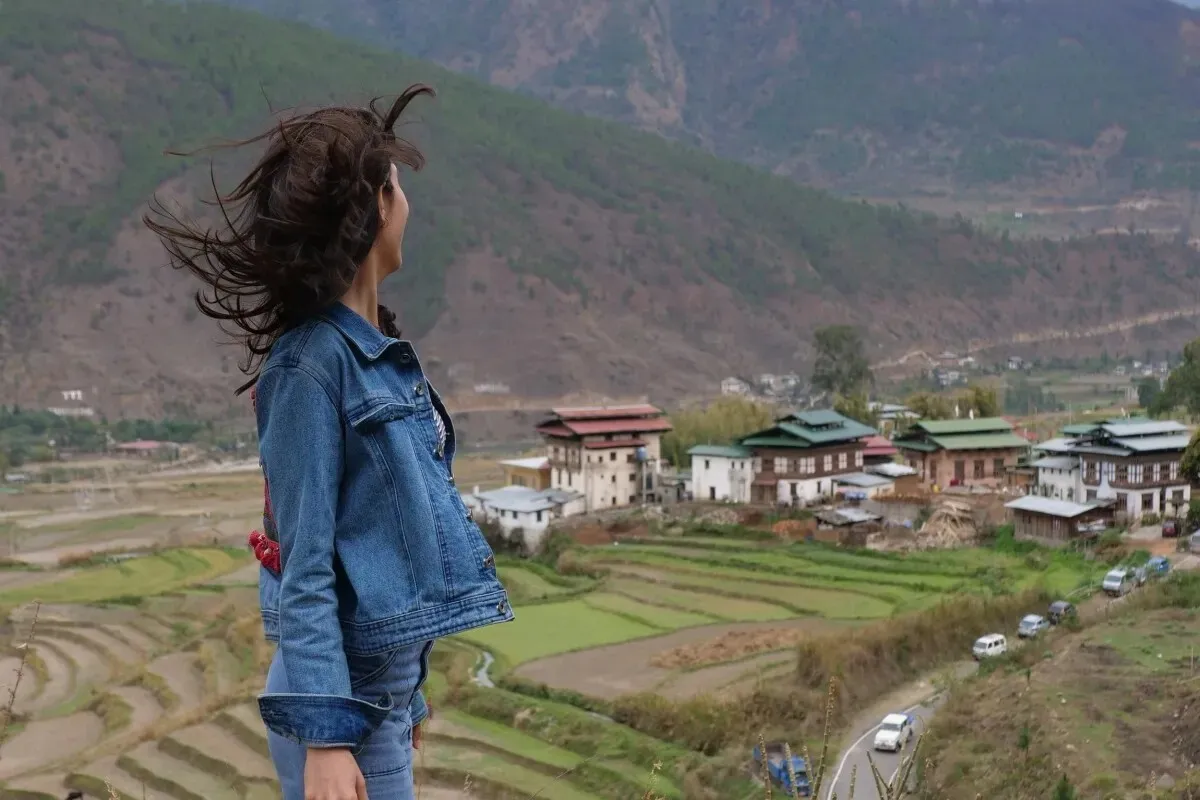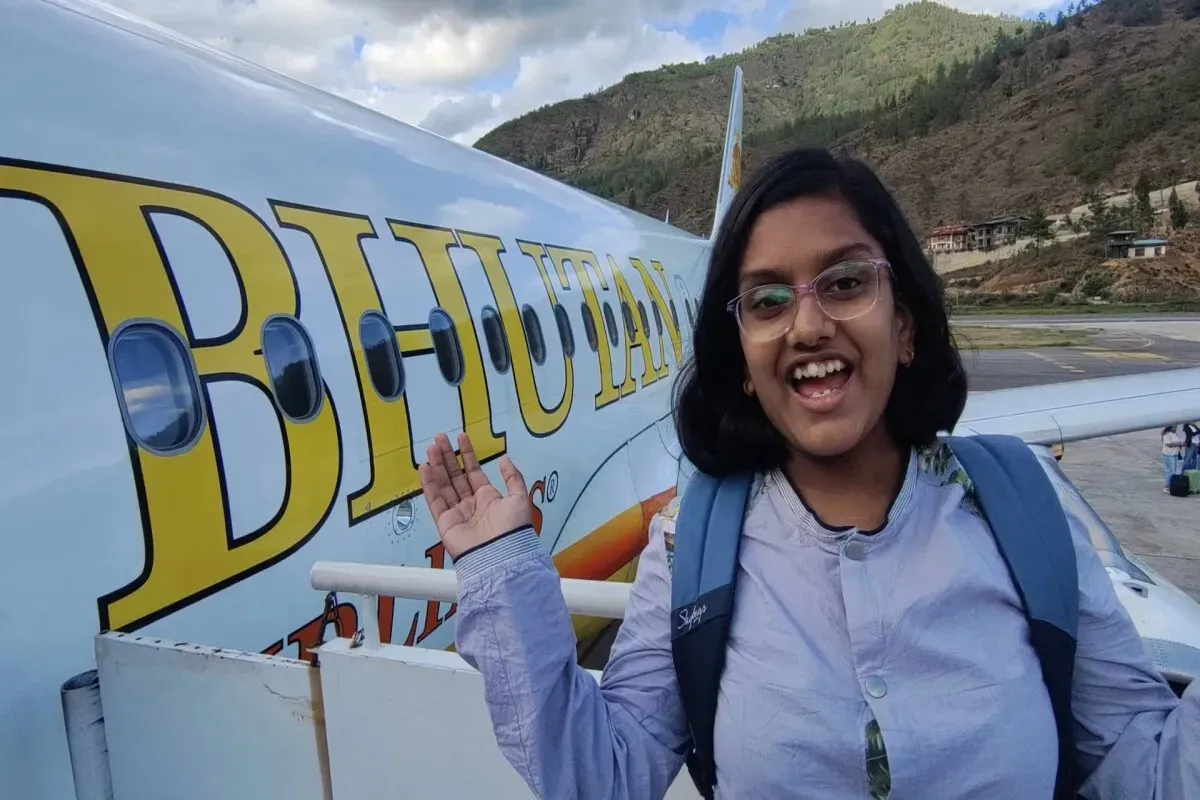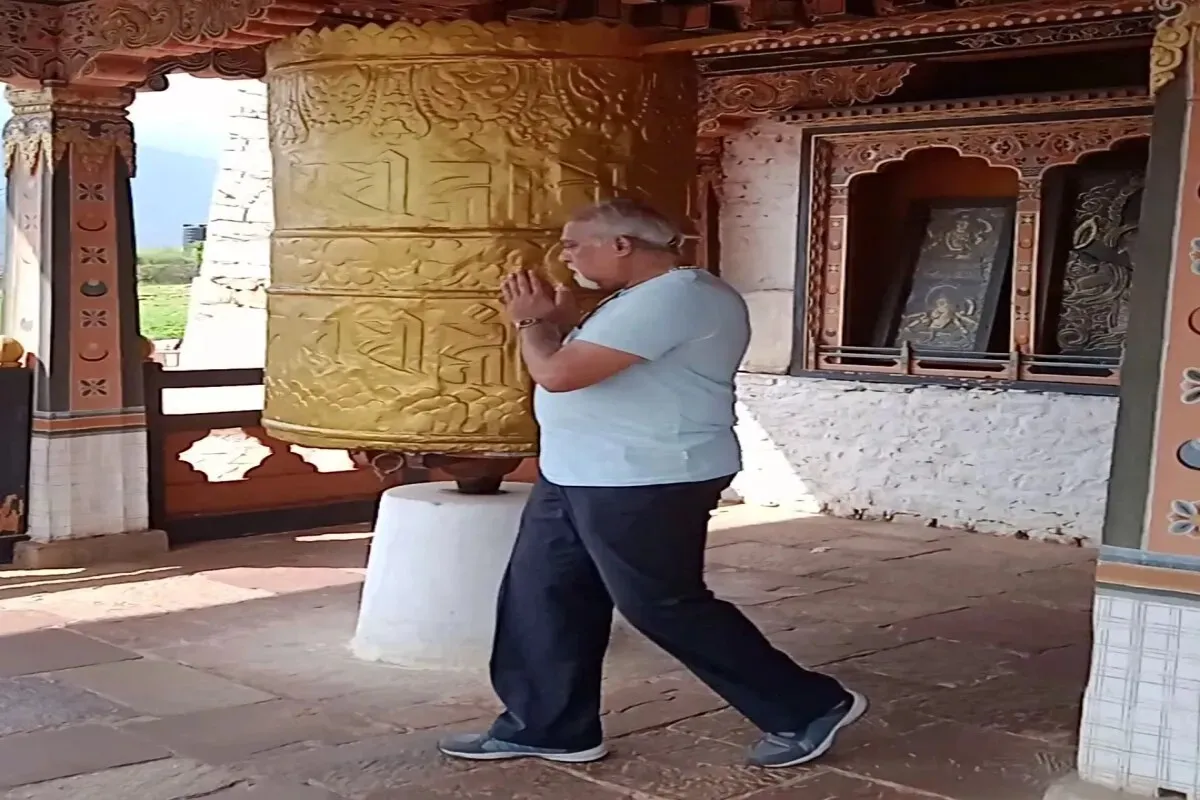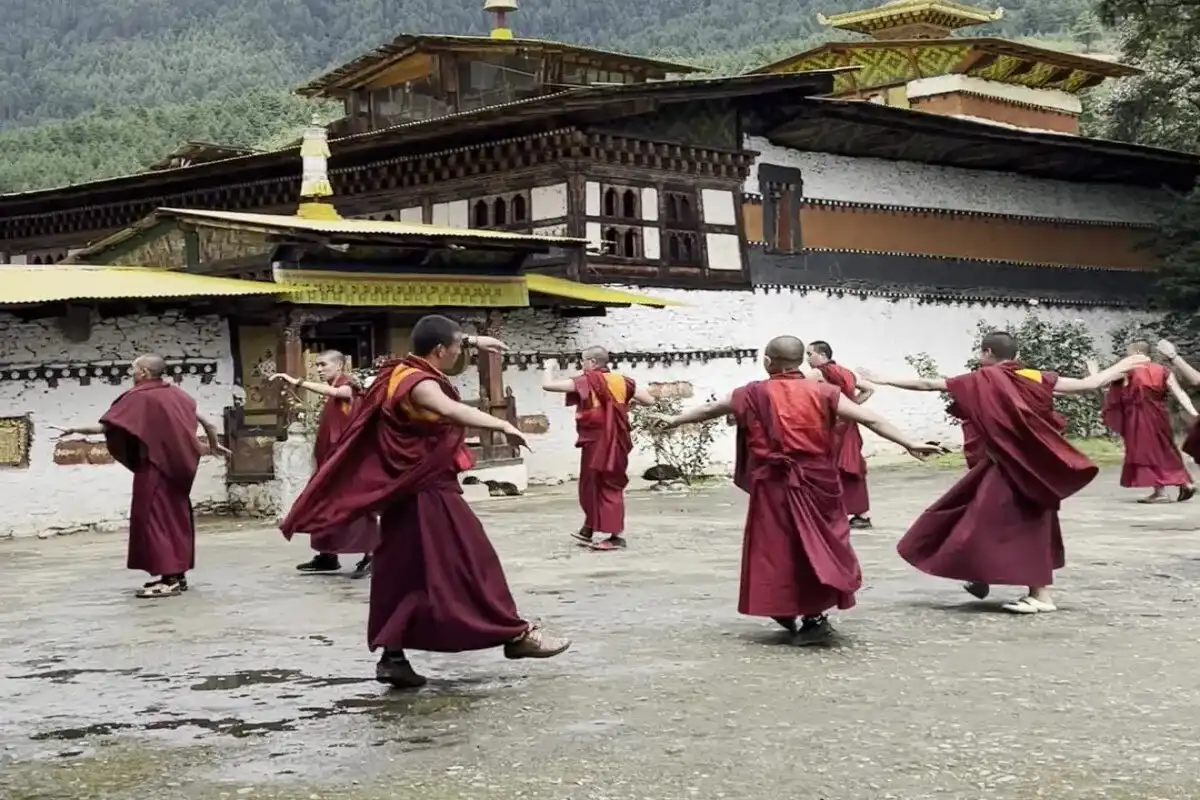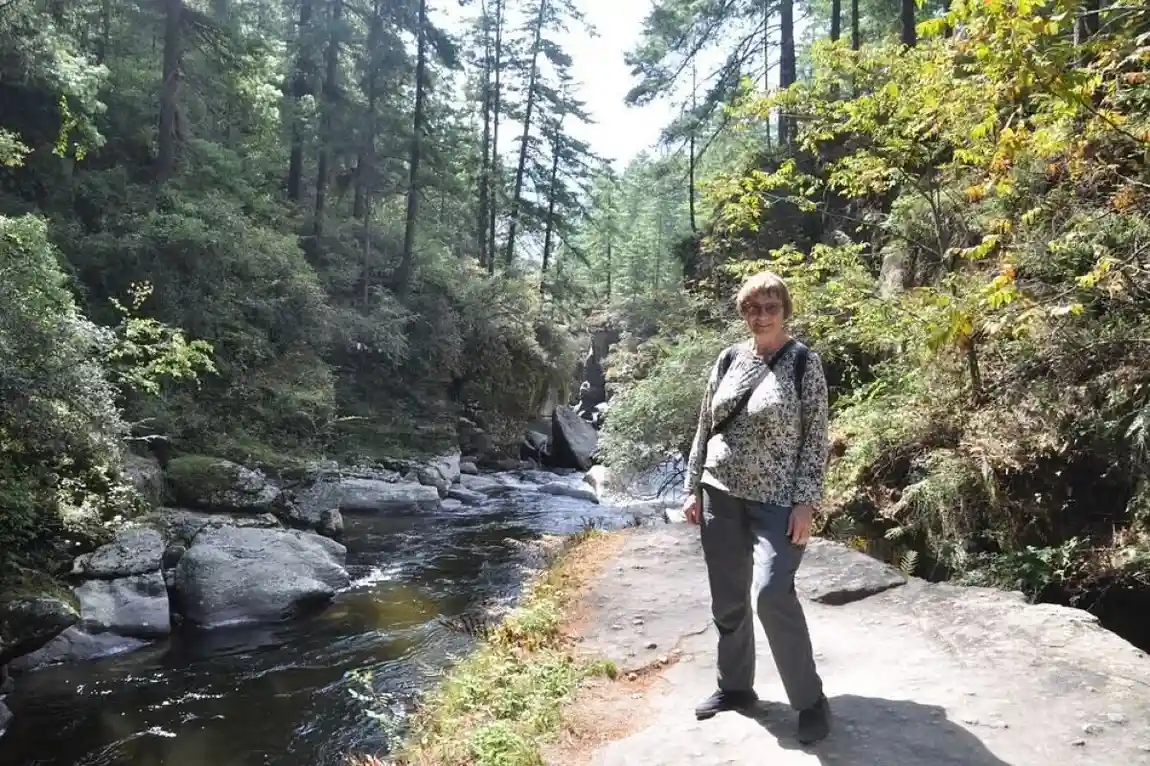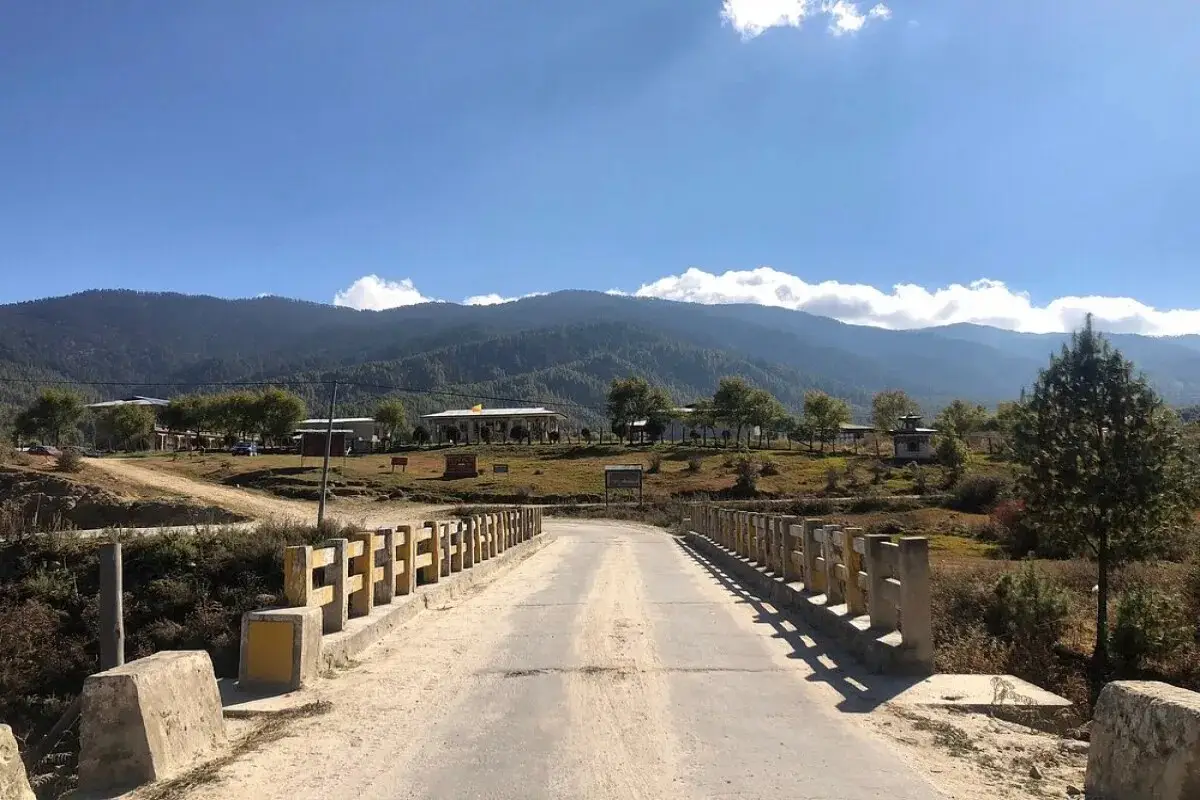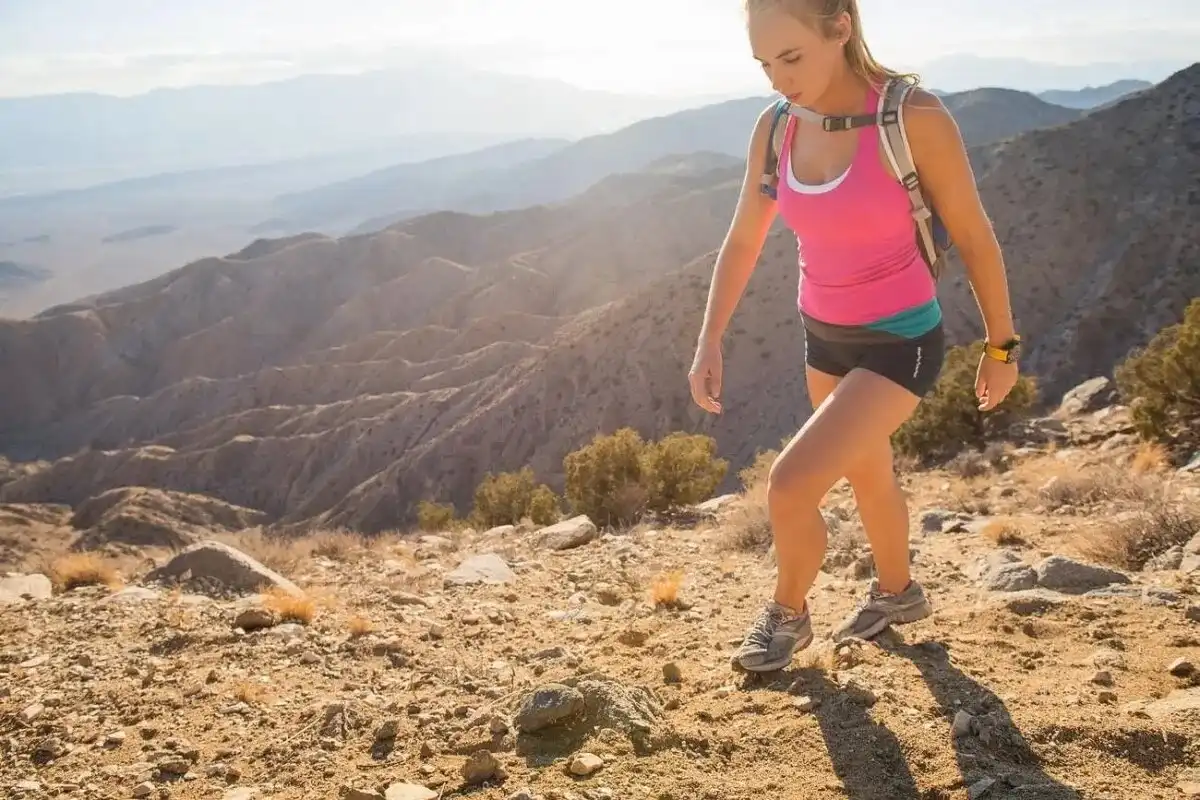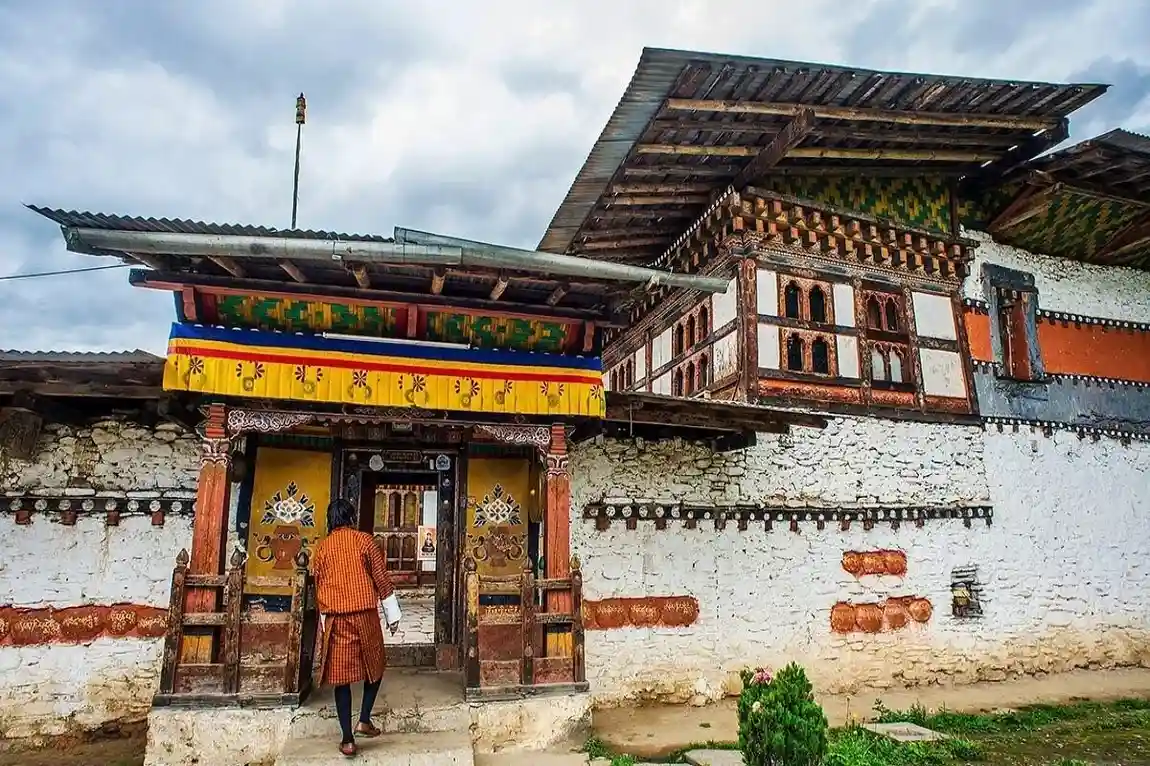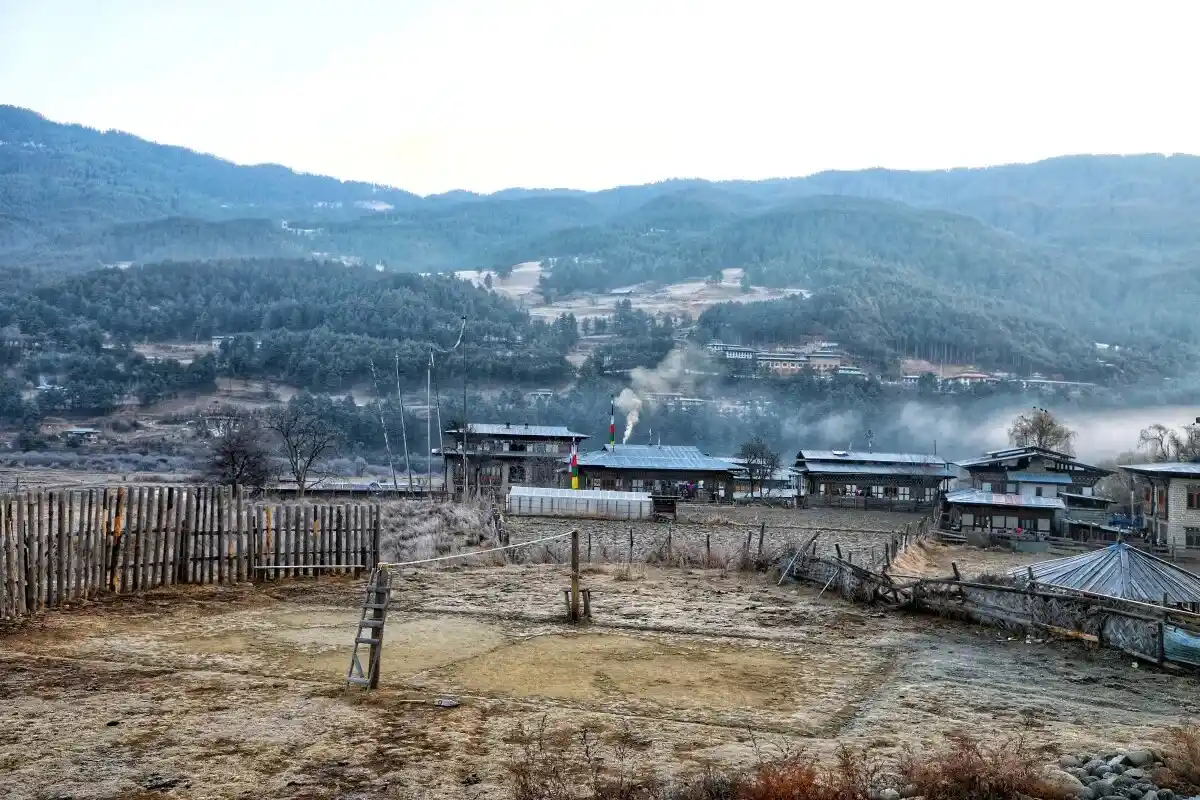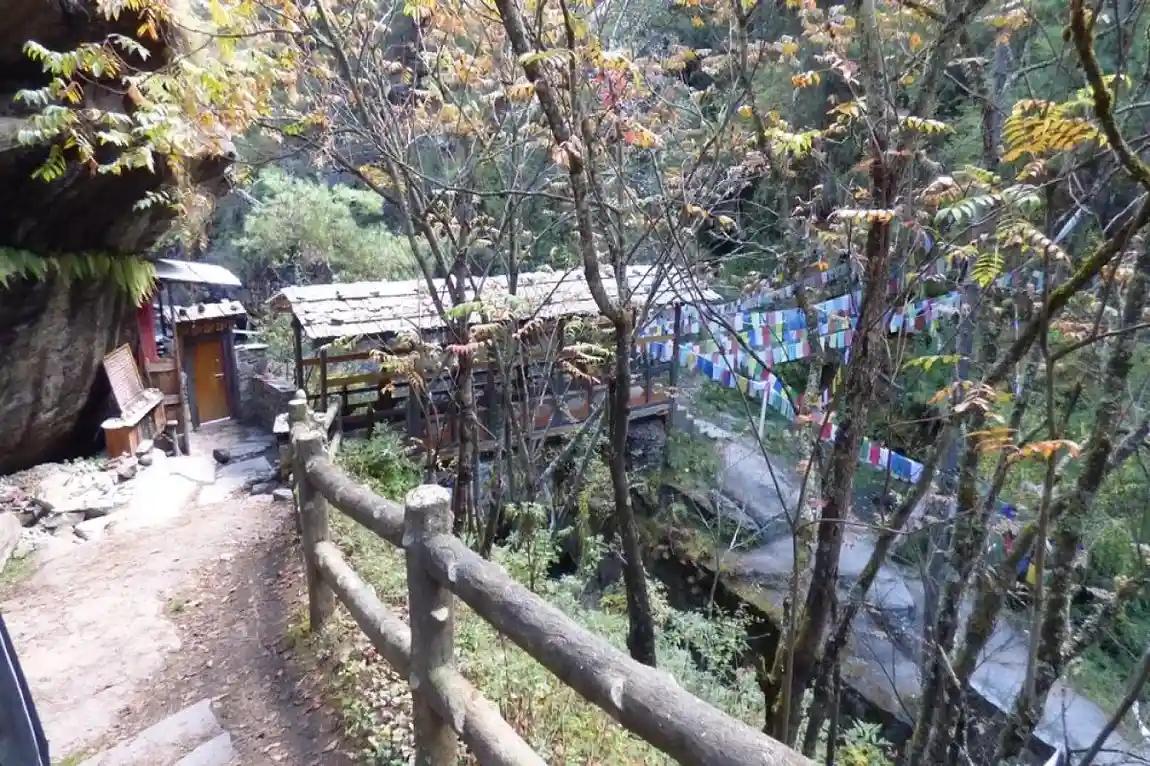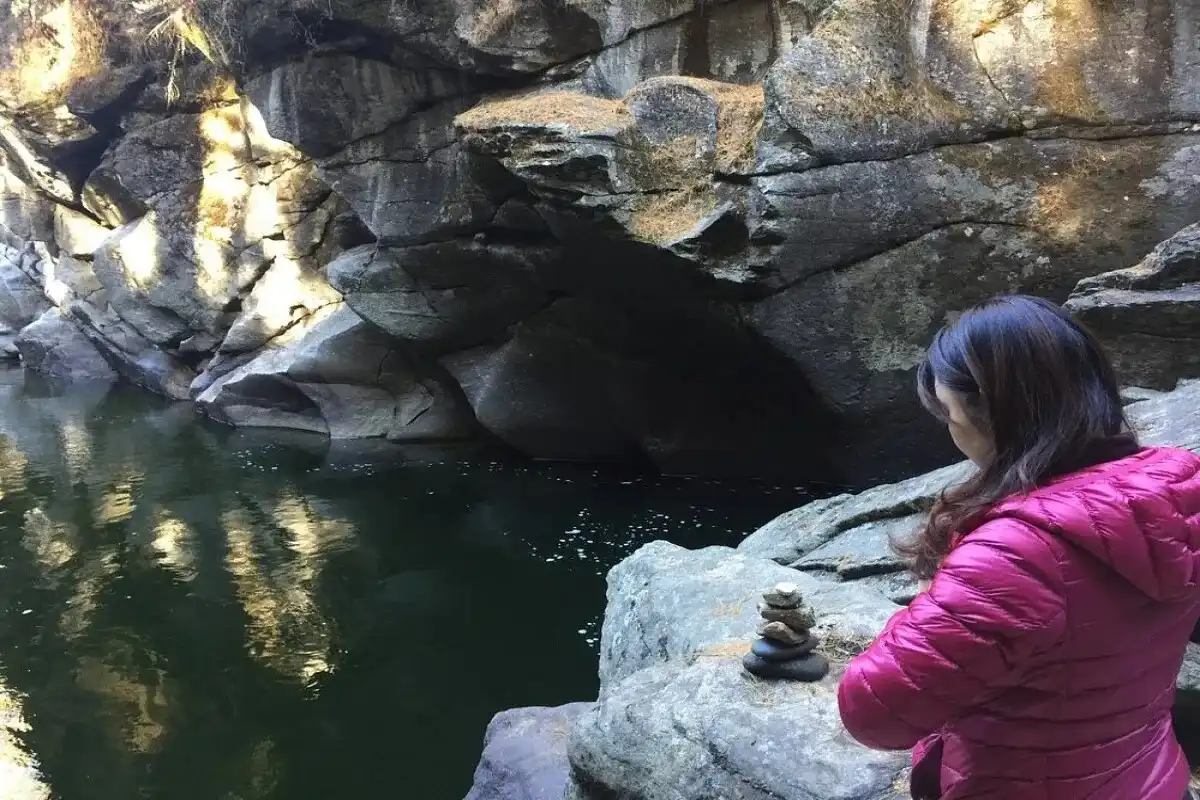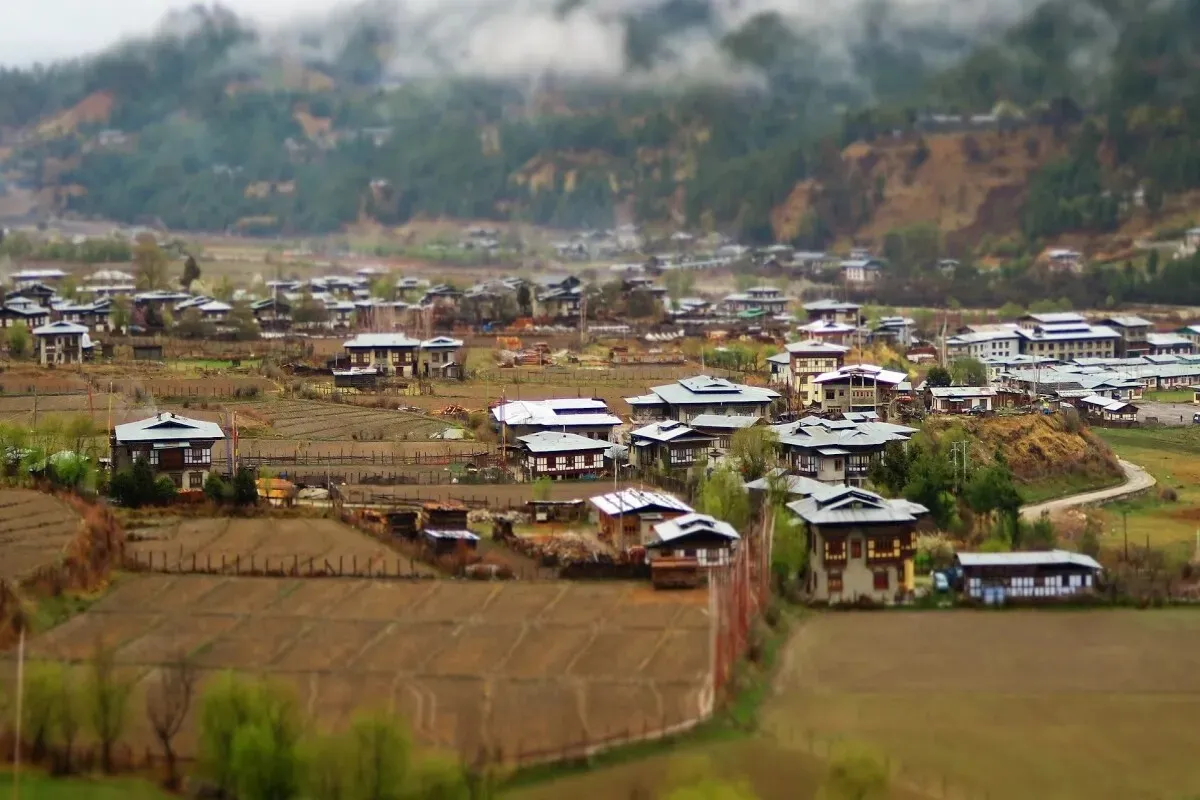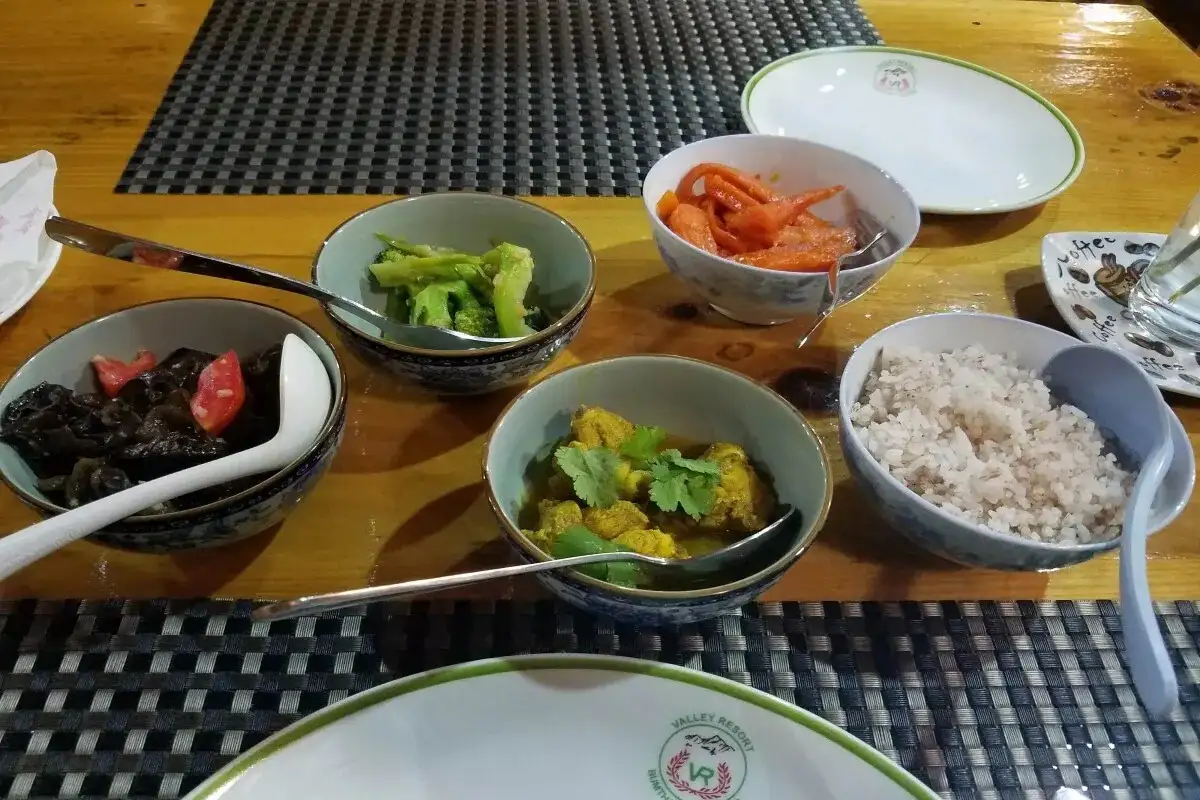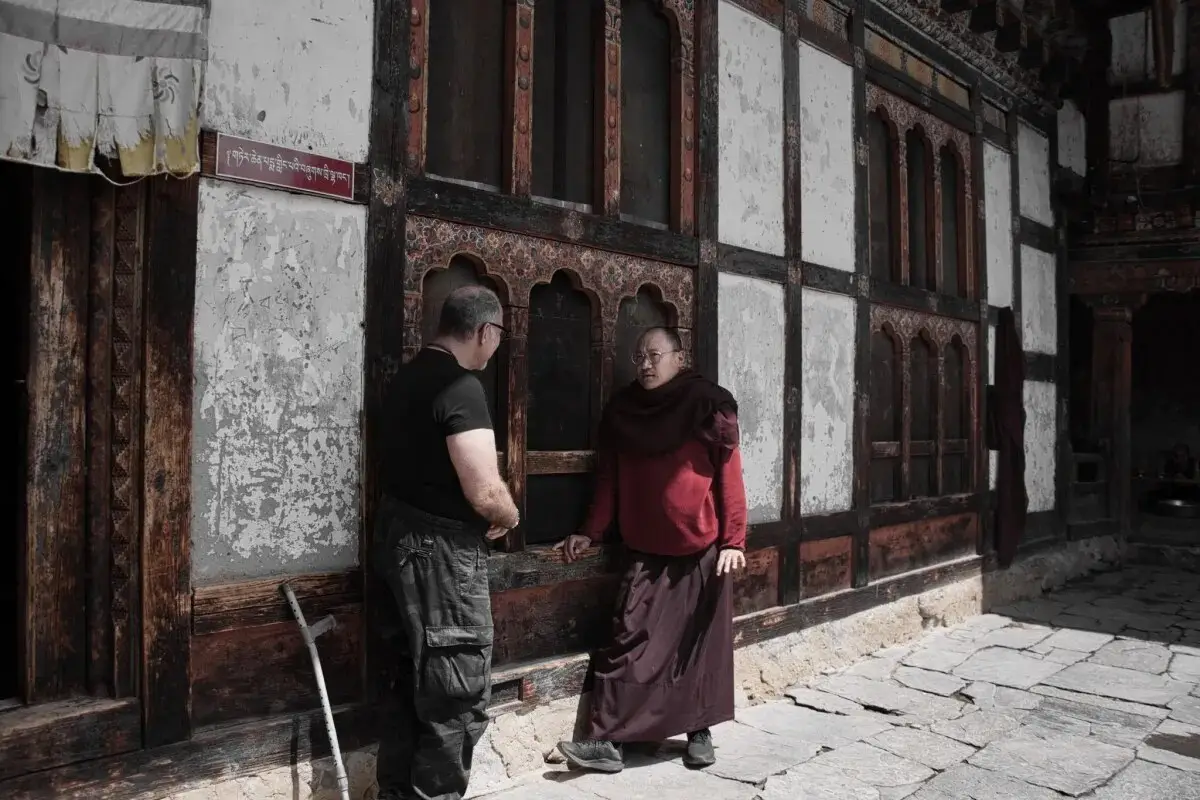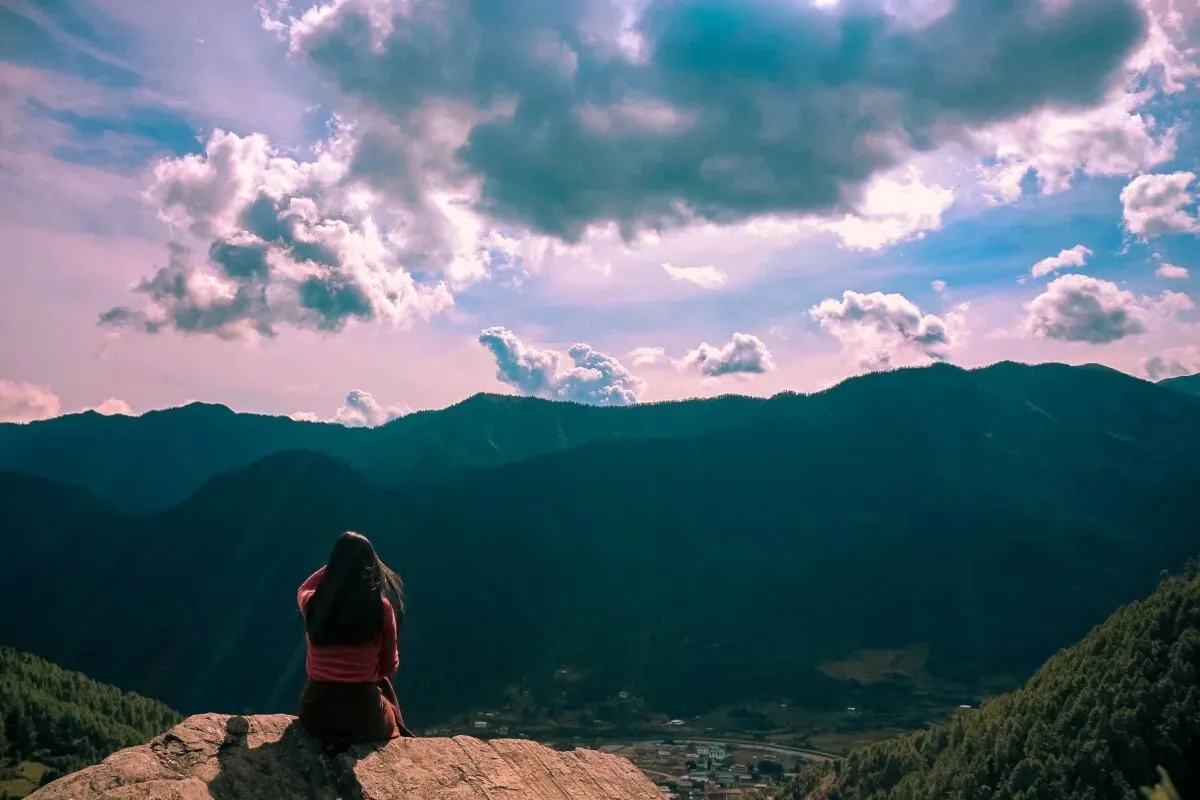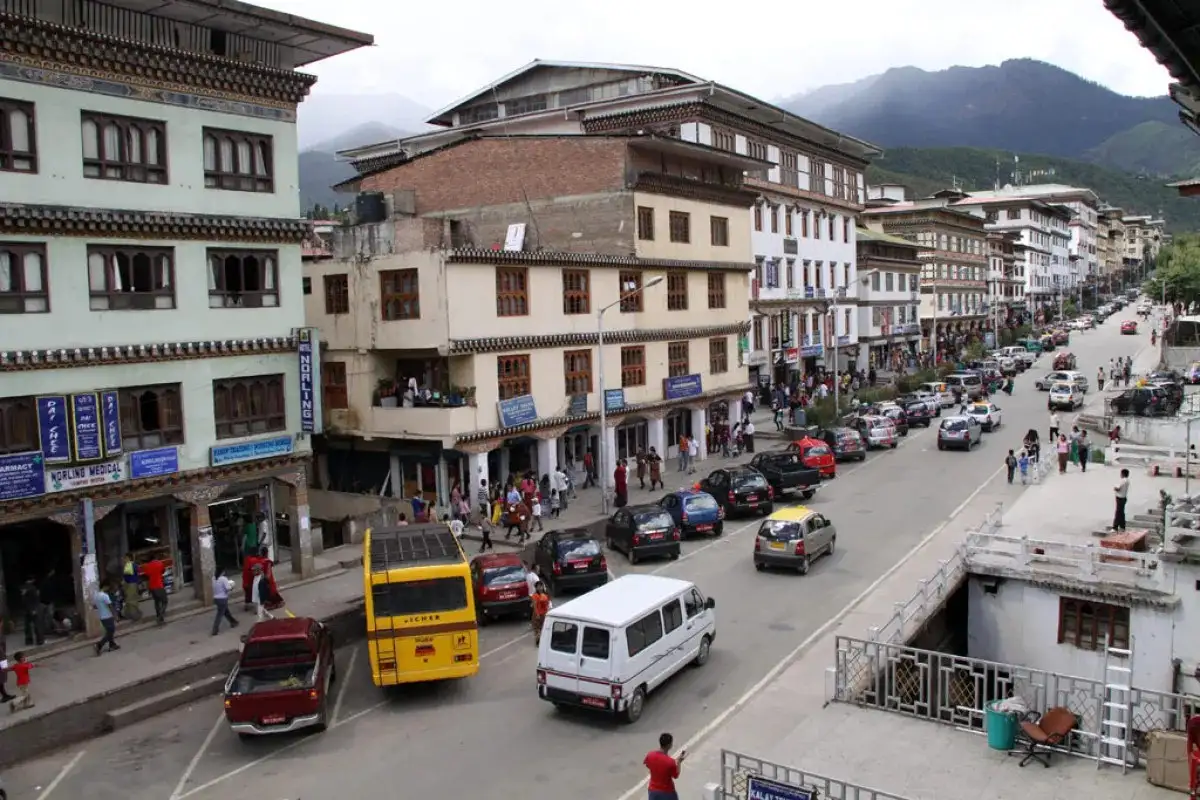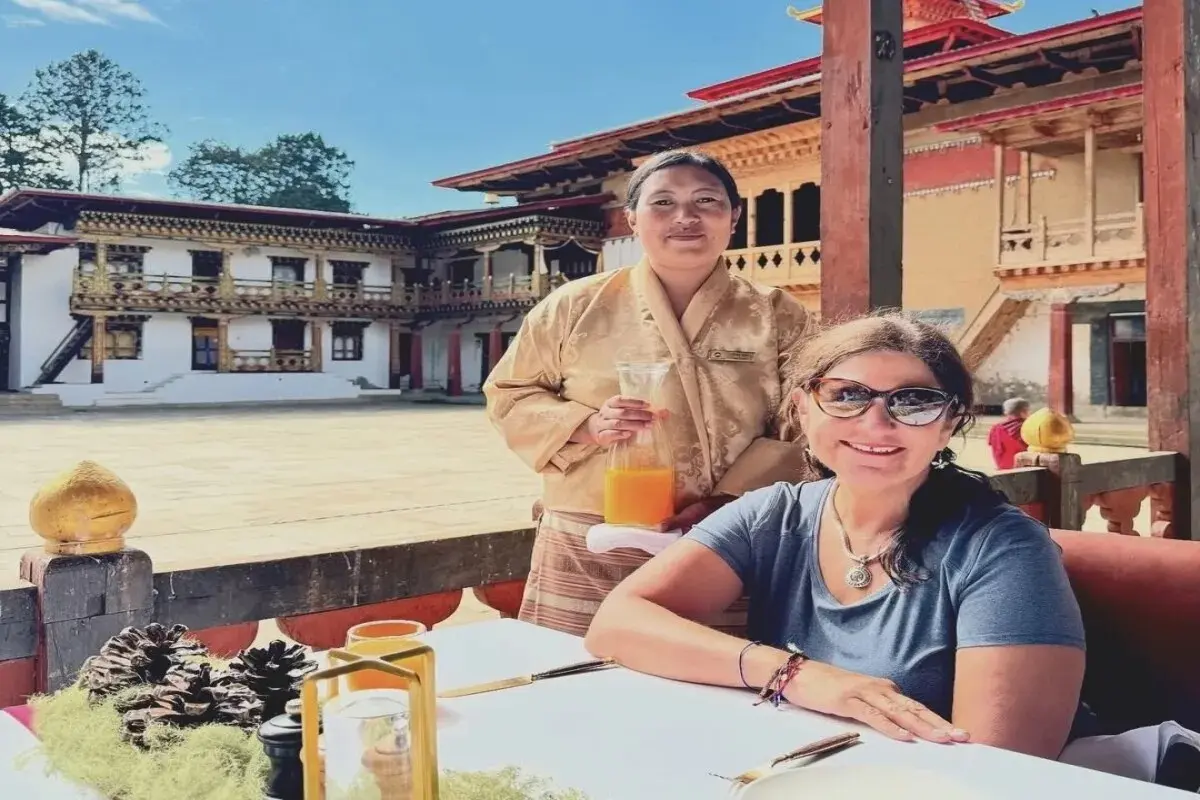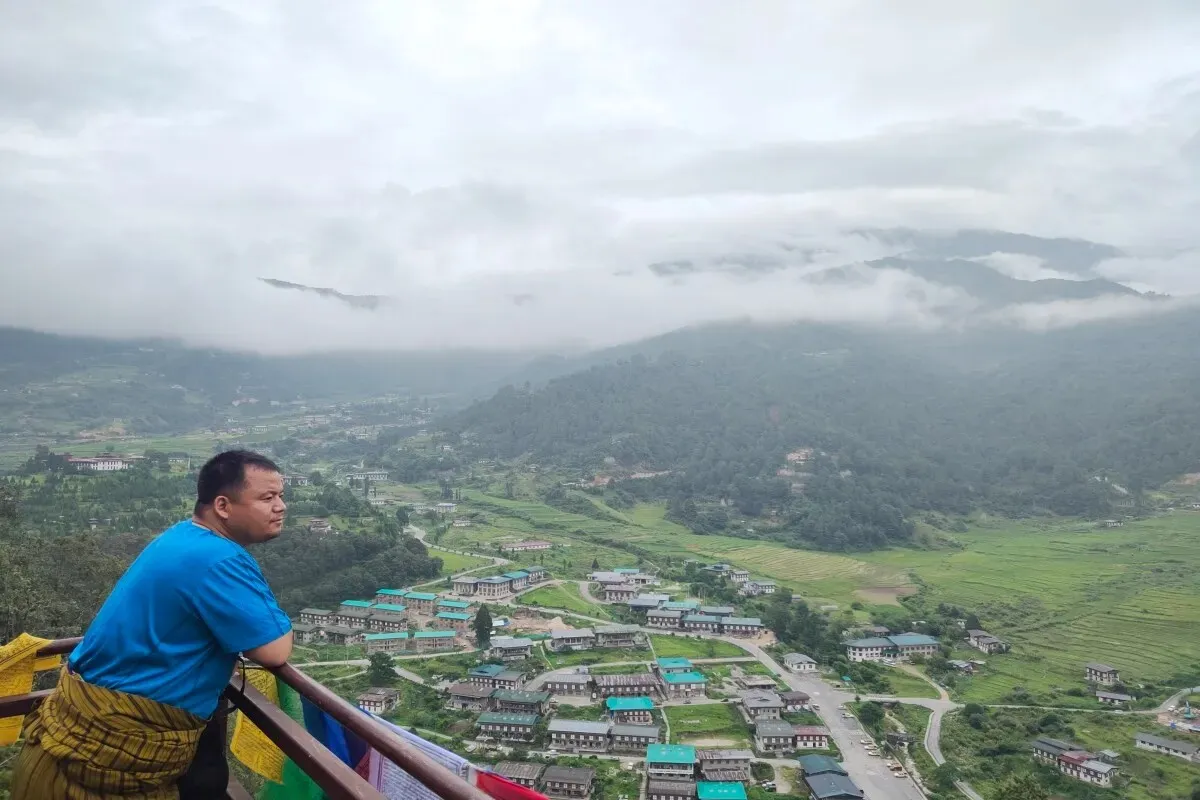Spiritual Retreat in Bhutan: Solo Experience - 5 Days
Enjoy a life-changing 5-day spiritual solo retreat in Bhutan where you can mix ancient Buddhist wisdom with the natural beauty of the Last Shangri-La. This hand-picked Bhutan meditation retreat will allow solo travellers and groups of up to 10 people to escape the modern world and reconnect with their inner beings in one of the most spiritually charged places in the world.
Highlights of the tour
- Bumthang - Heart of Spiritual Bhutan
- Ura Valley Hike
- Tamshing Monastery Exploration
- Cultural Immersion in Rural Villages
Trip Overview
This wellness retreat in Bhutan will take you through the divine corridors of Tamshing Monastery to the magical lakes of Mebar Tsho to offer personal reflection and spiritual development. Feel the real Bhutanese culture, and experience the independence of single travel in the country where Gross National Happiness is more important than material life.
Highlights of Spiritual Solo Retreat, Bhutan
This 5 days solo retreat in Bhutan is a journey where you will get to experience the culture and traditions along with exploration of the natural beauty. It is also an oppourtunity for a self learning about the lives in Bhutan.
Bumthang - Heart of Spiritual Bhutan
You might be interested to find out why Bumthang is regarded as the spiritual centre of Bhutan on this best spiritual solo retreat in Bhutan experience. We will visit the sacred Kurje Lhakhang, where Guru Rinpoche meditated and left his body trace in the sacred rock. The complex of the three main buildings is a symbol of various eras in Bhutanese religious architecture. You will travel on to Mebar Tsho (Burning Lake), a sacred pool, in which the renowned treasure revealer Pema Lingpa found religious treasures. The mystical air of the place, in the presence of prayer flags and the sound of running water, makes the place a perfect place to meditate and think about spiritual well-being.
Ura Valley Hike
You will be exploring the far and untouched Ura Valley, one of the most beautiful and spiritually rich places of Bhutan. It is a meditative hike on pathways through ancient blue pine and rhododendron forest with traditional farmhouses with golden barley fields. The valley is located at an altitude of 3,100 meters. This place offers panoramic views of the Himalayas. The hiking trail provides numerous opportunities for silent reflection and mindfulness practice. The mountain air and the peaceful ambience of this sacred landscape create the perfect environment for deepening your spiritual practice and connecting with nature's healing energy.
Tamshing Monastery Exploration
You will feel the magic of the spiritual Tamshing Monastery, constructed in 1501 by Pema Lingpa, which is regarded as one of the oldest and most sacred monasteries in Bhutan. It is a holy shrine that has the ancient and most valuable Buddhist relics in the kingdom, with original paintings and sculptures of Pema Lingpa. Wander in the halls of the monastery that has rich paintings of the life of Buddha and other protective forces. It is also possible to follow morning prayers with the resident monks. The peaceful monastery gardens and prayer halls are the ideal setting for meditation; they provide an opportunity to experience the tradition and devotion of Buddhism.
Cultural Immersion in Rural Villages
You would also love to know the actual Bhutanese culture by engaging the local communities in the traditional villages of Bumthang. Visit a few rural families where families have maintained their ancestral lifestyles and have been passing them down to their generations, and participate in their different activities like traditional weaving, butter tea, and organic farming. You will witness masked dances and be blessed by the village elders in case you visit during religious festivals. These are actual cultural experiences and can give you a better insight into Buddhist ideals of compassion, mindfulness, and harmony of the community, and thus your spiritual retreat will be more genuine and authentic through providing actual human contact and ancient wisdom.
Must Try Foods During the Solo Retreat in Bhutan
Bhutan is a nation that has a unique opportunity to nourish your soul and body with the assistance of its food in the process of your wellness retreat. The national dish, Ema Datshi (chillies with cheese), is a comforting and warming food, and very suitable in the mountain climate. Red rice is a staple grain of Bhutan, grown in the clean valleys of Bhutan, and has amazing nutritional value, and is also sacred in the Buddhist tradition.
Suja (butter tea) is a core component of Bhutanese hospitality and Buddhist culture and is traditionally served to visitors and drunk during meditation. The high-calorie, salty drink is energising and warming and makes you feel part of the centuries-old culture. Vegetable, cheese, or yak meat-filled momo (steamed dumplings) is also very popular. Gundruk (fermented leafy greens) is a source of probiotics to promote digestive wellbeing and is part of the Bhutanese idea of not wasting food. The traditional rice or maize wine, Ara, is frequently consumed during religious rituals, and it is possible to taste it in moderation as a cultural experience shared by locals.
What Activities Can Be Done During the Spiritual Solo Retreat in Bhutan
Cultural Sightseeing is the core of your Bhutan retreat, and you will have chances to explore ancient dzongs, traditional buildings and UNESCO World Heritage sites, which are the depiction of the rich Buddhist history of this kingdom. To get to know about the spiritual and cultural evolution of Bhutan, visit the National Museum and the fortress-monastery complex of Paro Dzong.
Spiritual & Mindful Activities involve meditation in monastery courtyards, morning prayers with resident monks, and mindful walking meditation in sacred places. To get to know more about the ancient Buddhist breathing, you can attend the dharma discussions with educated monks and get more spiritual information.
Photography & Exploration There are unlimited options for photography in the beautiful Himalaya scenery and traditional buildings, prayer flags, and candid moments of daily life in Bhutan. Captivate the power of light and darkness in the old temples, the foggy mountain valleys, and the tranquillity of the faces of the religious practitioners during the religious practice.
Cultural Interaction includes dining with the local families, learning the local arts of weaving and wood carving and visiting the village festivals. This will give you a peek at the Bhutanese way of life. These life experiences provide deep reflections on the teachings of Buddhism as they apply to daily life.
Light Adventure activities include easy hikes in the valley, nature walks in rhododendron forests, expeditions to remote meditation caves, and exploration of sacred pilgrimage trails, which are physical as well as spiritual practices and are ideal to keep you healthy during your trip.
Conclusion
This 5-day spiritual solo retreat in Bhutan is an unusual chance to undergo true transformation in one of the last Buddhist kingdoms in the world. The ancient wisdom of Tamshing Monastery and the mystical water of Mebar Tsho, all these moments of the trip, help to carry out a spiritual search and development. The meditation, the cultural experience, and the natural beauty of the environment make it the perfect place to get away from the modern distractions and back in touch with your inner wisdom. This Bhutan retreat offers a lifetime memory to keep you growing spiritually, whether you want to find relaxation, spirituality, or an overall memorable journey in general. You will return with loads of memories and a fresh mind. Book your transformative journey now and discover Bhutan,one of the world's most powerful destinations for spiritual seekers and conscious travellers.
This wellness retreat in Bhutan will take you through the divine corridors of Tamshing Monastery to the magical lakes of Mebar Tsho to offer personal reflection and spiritual development. Feel the real Bhutanese culture, and experience the independence of single travel in the country where Gross National Happiness is more important than material life.
Highlights of Spiritual Solo Retreat, Bhutan
This 5 days solo retreat in Bhutan is a journey where you will get to experience the culture and traditions along with exploration of the natural beauty. It is also an oppourtunity for a self learning about the lives in Bhutan.
Bumthang - Heart of Spiritual Bhutan
You might be interested to find out why Bumthang is regarded as the spiritual centre of Bhutan on this best spiritual solo retreat in Bhutan experience. We will visit the sacred Kurje Lhakhang, where Guru Rinpoche meditated and left his body trace in the sacred rock. The complex of the three main buildings is a symbol of various eras in Bhutanese religious architecture. You will travel on to Mebar Tsho (Burning Lake), a sacred pool, in which the renowned treasure revealer Pema Lingpa found religious treasures. The mystical air of the place, in the presence of prayer flags and the sound of running water, makes the place a perfect place to meditate and think about spiritual well-being.
Ura Valley Hike
You will be exploring the far and untouched Ura Valley, one of the most beautiful and spiritually rich places of Bhutan. It is a meditative hike on pathways through ancient blue pine and rhododendron forest with traditional farmhouses with golden barley fields. The valley is located at an altitude of 3,100 meters. This place offers panoramic views of the Himalayas. The hiking trail provides numerous opportunities for silent reflection and mindfulness practice. The mountain air and the peaceful ambience of this sacred landscape create the perfect environment for deepening your spiritual practice and connecting with nature's healing energy.
Tamshing Monastery Exploration
You will feel the magic of the spiritual Tamshing Monastery, constructed in 1501 by Pema Lingpa, which is regarded as one of the oldest and most sacred monasteries in Bhutan. It is a holy shrine that has the ancient and most valuable Buddhist relics in the kingdom, with original paintings and sculptures of Pema Lingpa. Wander in the halls of the monastery that has rich paintings of the life of Buddha and other protective forces. It is also possible to follow morning prayers with the resident monks. The peaceful monastery gardens and prayer halls are the ideal setting for meditation; they provide an opportunity to experience the tradition and devotion of Buddhism.
Cultural Immersion in Rural Villages
You would also love to know the actual Bhutanese culture by engaging the local communities in the traditional villages of Bumthang. Visit a few rural families where families have maintained their ancestral lifestyles and have been passing them down to their generations, and participate in their different activities like traditional weaving, butter tea, and organic farming. You will witness masked dances and be blessed by the village elders in case you visit during religious festivals. These are actual cultural experiences and can give you a better insight into Buddhist ideals of compassion, mindfulness, and harmony of the community, and thus your spiritual retreat will be more genuine and authentic through providing actual human contact and ancient wisdom.
Must Try Foods During the Solo Retreat in Bhutan
Bhutan is a nation that has a unique opportunity to nourish your soul and body with the assistance of its food in the process of your wellness retreat. The national dish, Ema Datshi (chillies with cheese), is a comforting and warming food, and very suitable in the mountain climate. Red rice is a staple grain of Bhutan, grown in the clean valleys of Bhutan, and has amazing nutritional value, and is also sacred in the Buddhist tradition.
Suja (butter tea) is a core component of Bhutanese hospitality and Buddhist culture and is traditionally served to visitors and drunk during meditation. The high-calorie, salty drink is energising and warming and makes you feel part of the centuries-old culture. Vegetable, cheese, or yak meat-filled momo (steamed dumplings) is also very popular. Gundruk (fermented leafy greens) is a source of probiotics to promote digestive wellbeing and is part of the Bhutanese idea of not wasting food. The traditional rice or maize wine, Ara, is frequently consumed during religious rituals, and it is possible to taste it in moderation as a cultural experience shared by locals.
What Activities Can Be Done During the Spiritual Solo Retreat in Bhutan
Cultural Sightseeing is the core of your Bhutan retreat, and you will have chances to explore ancient dzongs, traditional buildings and UNESCO World Heritage sites, which are the depiction of the rich Buddhist history of this kingdom. To get to know about the spiritual and cultural evolution of Bhutan, visit the National Museum and the fortress-monastery complex of Paro Dzong.
Spiritual & Mindful Activities involve meditation in monastery courtyards, morning prayers with resident monks, and mindful walking meditation in sacred places. To get to know more about the ancient Buddhist breathing, you can attend the dharma discussions with educated monks and get more spiritual information.
Photography & Exploration There are unlimited options for photography in the beautiful Himalaya scenery and traditional buildings, prayer flags, and candid moments of daily life in Bhutan. Captivate the power of light and darkness in the old temples, the foggy mountain valleys, and the tranquillity of the faces of the religious practitioners during the religious practice.
Cultural Interaction includes dining with the local families, learning the local arts of weaving and wood carving and visiting the village festivals. This will give you a peek at the Bhutanese way of life. These life experiences provide deep reflections on the teachings of Buddhism as they apply to daily life.
Light Adventure activities include easy hikes in the valley, nature walks in rhododendron forests, expeditions to remote meditation caves, and exploration of sacred pilgrimage trails, which are physical as well as spiritual practices and are ideal to keep you healthy during your trip.
Conclusion
This 5-day spiritual solo retreat in Bhutan is an unusual chance to undergo true transformation in one of the last Buddhist kingdoms in the world. The ancient wisdom of Tamshing Monastery and the mystical water of Mebar Tsho, all these moments of the trip, help to carry out a spiritual search and development. The meditation, the cultural experience, and the natural beauty of the environment make it the perfect place to get away from the modern distractions and back in touch with your inner wisdom. This Bhutan retreat offers a lifetime memory to keep you growing spiritually, whether you want to find relaxation, spirituality, or an overall memorable journey in general. You will return with loads of memories and a fresh mind. Book your transformative journey now and discover Bhutan,one of the world's most powerful destinations for spiritual seekers and conscious travellers.
Short Itinerary
Arrive in Paro, visit Paro Dzong and National Museum, fly to Bumthang, and evening acclimatization
Hike to Ura Valley with mountain views, meditation in nature, and local interactions
Morning prayers at Tamshing Monastery, explore sacred art, and visit Bumthang villages
Visit Mebar Tsho (Burning Lake), forest walk, and riverside meditation
Explore local villages, weaving demonstrations, final meditation session, and depart from Paro
Spiritual Retreat in Bhutan: Solo Experience Itinerary
You will begin your spiritual solo retreat in Bhutan adventure with the arrival in Paro, where you experience the fresh mountain air, the valleys covered with prayer flags that immerse you straight into the Buddhist culture. After that, visit the Paro Dzong, the administrative and religious centre of a fortress-monastery where the traditional Bhutanese architecture and life of the monks are displayed. The National Museum in the watch tower above the dzong has religious items, traditional dresses, and history galleries to help you get a background of your spiritual journey. In the afternoon on the same day, fly to Bumthang using a domestic flight and fly past the Himalayan mountains. In the evening, you reach Bumthang and have some time to adjust and explore where you are staying.
Today, you will visit the most distant and spiritually important sites of Bhutan, where you will have the best experience during your Bhutan meditation retreat. The hiking path goes through the primaeval forest of blue pines, through the fields with the flags of prayer, and through the old farmhouses. The valley is located at 3,100 meters. The panoramic view of snow-capped mountains and wilderness is breathtaking and makes you have a deep thought. Find a meditating corner for yourself and be mindful of the environment in the deep silence of the Himalayas. The day consists of meditation lessons in which the emphasis is put on the connection with the healing power of nature and inner peace. You can also meet the locals who live simple but full lives with their traditional lifestyles. You will get to learn about them and how they live their lives, and all that, with Buddhist principles of contentment and harmony with nature.
On the third day, you will spend the day immersing yourself spiritually at Tamshing Monastery, one of the oldest and holiest religious institutions in Bhutan, founded in 1501. You will pray with resident monks in the morning prayers in the incense-filled environment. Visit the old halls of the monastery with original sculptures describing the stories of Buddhist teaching and Bhutan's spiritual heritage. The afternoon involves touring the traditional villages of Bumthang. There you will be exposed to a real cultural interaction of the people of Bhutan, and your interaction with them and their rural life, their traditional arts and crafts, and how they practically apply the philosophy of Buddhism in their day-to-day activities.
Today (Day 9), you visit Mebar Tsho (Burning Lake), believed to be one of the holiest shrines in Bhutan, where Pema Lingpa buried a treasure of religious items in the 15th century. Your walk following through the forested trails decorated with prayer wheels and Buddhist stupas ensures a meditative walk. The natural beauty of the site, which lies in the cliffs and the moving water, gives the best conditions for spiritual experience. Practice meditation according to the ancient customs of Buddhists, listening to the sound of flowing water and the rustling of prayer flags. Your departure gives you a chance to meditate on nature and reflect on everything you learned in the process of being in this powerful place to gain spiritual experiences.
This will be the last day of your trip, and you will wrap up your transformative solo trip to Bhutan with a rural experience of the villages in Bumthang. You will be witnessing the true Bhutanese hospitality and the traditional lifestyle one last time. You can utilise this time by making a visit to local homes, where families show traditional weaving. You will also see how the preparation of traditional foods are prepared. The morning will be a final meditation session in a beautiful place, which will give time to absorb what you have learned and create intentions to continue your spiritual practice after Bhutan. We will trip back to Paro to depart after having lunch consisting of traditional Bhutanese food. The scenic ride gives you a meditative insight back to the outside world as you take your memories and spiritual growth of your retreat as a souvenir of the Land of the Thunder Dragon.
Know Before You Travel
-
Best season for the trip:
The autumn and spring seasons (September-November and March to May) are the best months to visit Bhutan to practice your spiritual solo retreat. The weather is the most conducive to meditating, hiking, and other outdoor spiritual activities during this time of the year. The sacred places are best visited and meditated in nature during autumn because the weather is comfortable, the mountain is clear, and the rain is very minimal. During spring, the rhododendrons blossom, and this will be a breathtaking and stimulating setting for your spiritual journey, and the moderate weather will offer a comfortable experience to go trekking in the Ura Valley.
However, the winter months (December-February) are extremely cold, especially in the northern highlands (Bumthang). But you will have the advantage of fewer tourists and a more intimate experience at sacred sites. The skies are crystal clear in the winter and provide magnificent views of the mountains, and the air is cool and causing the meditative experience to be intense. Before confirming the dates, keep in mind your preferences for weather and the involvement of some spiritual practices.
FAQs for Spiritual Retreat in Bhutan: Solo Experience
The package comprises accommodation in a Bhutanese guesthouse, all meals with local food, domestic flights between Paro and Bumthang, private car, experienced English-speaking guide, entrance fees to monasteries, and government taxes. The price includes sessions of spiritual guidance, meditation practice, and cultural activities, but not international flights, personal expenses, and optional activities.
You do not need any prior meditation experience. The retreat is proposed both to beginners and to experienced practitioners. The guided instructions will be adjusted to the personal levels. We offer the basic methods of meditation and slowly progress through to advanced practices depending on the level of comfort and interest of the participant.
Bring comfortable hiking shoes, warm and cold weather clothing, a raincoat, a meditation cushion or mat, a journal to reflect, a camera, sunscreen, a hat, and personal medications. Bring warm clothing in layers since even in summer, the evenings in the mountains can be cold, and bring some modest clothing to visit the monasteries (shoulders and legs should be covered).
The itinerary has high altitude hiking and walking on rough surfaces, so moderate fitness levels are required. The Ura Valley hike is not demanding in terms of physical fitness, and it can be adjusted according to your personal abilities. The participants must feel free to walk 2-3 hours per day at altitudes up to 3,100 meters.
Yes, vegetarian and most dietary restrictions can be accommodated with advance notice. Bhutanese food has a lot of vegetarian dishes as standard, and our guides discuss with local restaurants to make sure that there will be appropriate meal choices during the retreat.
This retreat is targeted at spiritual development and introspection as opposed to traditional tourism. The itinerary focuses on meditation practice, immersion in a monastery, and real cultural exchange rather than on tourist attractions. The smaller number of people will guarantee individual attention and closer spiritual experiences.
Bhutan is regarded as one of the safest nations where solo travellers, including women can travel. Respect and non-violence are key aspects of the Buddhist culture; there are very low crime rates, and residents are friendly to visitors. Additional security and cultural direction during the retreat are offered by our experienced guides.
Book 2-3 months before, preferably during peak seasons (March-May and September-November). Booking earlier will provide one with better accommodation choices and time to process visas. Your flexibility in terms of schedule should be taken into consideration since the weather, at times, delays or interferes with domestic flights and trekking.
You need a visa and all necessary permits for your trip. These documents can not be received on the day of your arrival, so they must be processed before coming here. After you book a trip with us, we will manage these papers for you. Your Bhutan visa is arranged by Orrog as part of the package.
The main way to come to Bhutan is through Paro International Airport, which is well-connected to cities like Bangkok, Delhi, Kathmandu, and Singapore. Most people arrive by air, but if you plan to come via road, you can enter through Phuentsholing, located on the southern border with India, which is the most commonly used entry point.
It is recommended to apply for the visa at least 20 days before your planned departure date so that there is enough time for processing your Bhutan visa, finalizing your itinerary, and arranging your guides and transportation. Although visa processing itself is relatively fast once payment is received, early preparation helps avoid delays and ensures availability, especially during peak seasons (spring and autumn).
You don’t require a passport-size photo for the visa, but it is wise to carry at least 2–4 recent passport-sized photographs during your trip. These may be needed for local permits, registration, or when applying for a local SIM card upon arrival in Bhutan.
Yes, you can lengthen your stay in Bhutan either before or after your trip. Bhutan’s tourism model requires visitors to pay a Sustainable Development Fee (SDF) and a daily package cost, so any extra days will involve additional charges. Extensions are a great opportunity to explore cultural sites in Paro, Thimphu, or even add another short trip or day hike.
Yes, Bhutan requires full tour payment in advance before your visa can be processed and issued. The government of Bhutan regulates this policy to ensure that all travel arrangements are confirmed through a licensed Bhutanese tour operator. We are a licensed tour operator that ensures you have everything you need for a trouble-free trip.
Any personal expenses are not covered in the package like:
- Tips for your guide and other staff
- Bottled drinks and snacks(personal expense)
- Souvenirs or local crafts
Credit cards are easily accepted in major cities like Paro and Thimphu. But in remote areas, you may not have access to a card or an ATM. So, it is best to carry some cash before heading for the trip.
Tipping is not mandatory, but it is a widely appreciated gesture and a customary way to show gratitude for good service. The tipping guideline would be to give USD 5-10 per day as a tip for the guides and other staff.
Paro International Airport is the only international airport in Bhutan. It is well connected by flights from cities like Bangkok, Delhi, Kathmandu, and Singapore.
Yes, airport pick-up and drop-off are included in the package. We will have your guide and driver meet you at the airport and transport you to your hotel.
While Bhutan's roads are mostly paved, some parts are narrow, winding, and occasionally affected by weather. However, we ensure your travel is safe, well-maintained, and driven by an experienced professional throughout the journey.
The Bhutanese Ngultrum is used in Bhutan. All local transactions during the trip will be in BTN.
US Dollars (USD) are generally accepted at larger hotels, souvenir shops, and tour operators, particularly in Paro and Thimphu. However, it’s advisable to convert your currency to BTN for general purchases in rural areas. Other currencies like the Euro or the Pound are not commonly accepted directly.
No, credit or debit cards are not accepted on the trip, as it takes you through remote regions with no banking or electronic payment access. All trip-related payments like accommodation, meals, permits, etc, are paid in advance.
You can exchange foreign currency at the Paro International Airport, at banks, or through licensed money changers in cities like Thimphu and Paro. It's best to exchange enough cash before heading out on the trip.
The national language is Dzongkha, but many Bhutanese also speak English. If you speak English and are worried about communicating with the local people, you will have your guide as a translator.
Yes, all licensed tour guides in Bhutan are required to speak fluent English. Many are also trained in other languages such as German, Japanese, or French. Communication during the trip will be smooth and clear in English.
Most signboards, tourist maps, and information brochures are written in English, especially in tourist destinations like Paro, Thimphu, and trailheads. Directional signs along routes are often labeled in both Dzongkha and English.
No, learning Dzongkha is not at all needed for the trip, but knowing a few basic words like "Kuzu zangpo la" (Hello) or "Kadrinche la" (Thank you) is a good way to interact with the locals.
Language barriers are minimal, as your guide will handle all communication with locals and support staff. Your guide will translate for you during your interaction with the locals.
To greet people, you can greet with locals “Kuzu zangpo la” (Hello) by performing a slight bow. Most common greetings include physical greetings, such as shaking hands less visible, especially in rural areas.
Yes, but remember to seek permission, especially when taking photos of monks, locals, or temples. Please note that clicking photos is not allowed at most religious sites.
Visitors should dress modestly and respectfully. This means:
- Covering shoulders and knees
- Removing hats and sunglasses
- Not wearing shorts or sleeveless tops
This applies to both men and women.
Yes, Bhutanese society is deeply rooted in Buddhism and tradition. Here are some key taboos:
- Do not point your feet at people or sacred objects
- Never touch anyone on the head, as it is considered sacred
- Walk clockwise around temples, stupas, and religious monuments
- Avoid public displays of affection
While gifts are not expected, they may be accepted graciously if given with respect. It is advisable to consult with the guide before giving out anything.
Bhutan typically uses Type C, Type D, and Type G electrical outlets. Standard safe voltage is 230V and frequency is 50Hz; therefore, ensure that your equipment is compatible with this voltage.
Indeed, it is highly advised to take along a universal travel adapter, particularly one to fit a variety of types of plugs, because plugs can be different in a hotel or a guesthouse.
Bhutan follows Bhutan Time (BTT), which is UTC/GMT +6 hours. This time zone remains consistent throughout the year.
No, Bhutan does not observe daylight saving time. The country maintains the same time year-round.
Bhutan is 30 minutes ahead of India. For example, 12:00 PM in India is 12:30 PM in Bhutan.
Yes, souvenirs can be bought in Paro or Thimphu before or after the trip.
Some popular souvenirs include hand-woven textiles (kira and gho fabric), prayer flags, thangka (religious scroll) paintings, handmade paper products, traditional masks, and Buddhist artifacts.
You can do some gentle bargaining in local street markets. However, in government-run shops and fixed-price stores, prices are usually non-negotiable.
Yes, you can easily purchase a SIM card upon arrival in Bhutan. We will assist you with the process, and you'll need a passport copy and a passport-sized photo.
No, internet access is not available during the trip. However, Wi-Fi is available in hotels in Paro and Thimphu before and after the trip.
Along our trip, we will go through different places. So, we will stay in accommodation that is available, ranging from boutique wellness resorts and eco-lodges to comfortable 3-star hotels and trekking campsites.
Yes, Bhutan has a growing number of wellness-focused retreats and luxury lodges that offer spa, yoga, and meditation programs. So, you will be staying in wellness resorts to lift your overall experience.
Yes, most accommodations provide hot water and heating. During treks, basic facilities are available, but comfort varies depending on altitude and remoteness.
You need to be moderately fit for activities like hiking, cycling, and trekking. We can tailor itineraries based on your fitness level.
Absolutely, our programs suit all experience levels, from beginners to advanced practitioners.
Our guides are trained in basic first aid and altitude-related issues. They will ease you, and an emergency evacuation will be arranged if necessary.
Depending on the tour, you experience yoga, meditation, traditional Bhutanese hot stone baths, herbal treatments, and spiritual rituals guided by monks.
Yes, our retreats include sessions with monks or lamas for mindfulness, Buddhist teachings, and guided meditations.
We provide nutritious, mostly organic meals, often prepared with locally grown ingredients. If you have any special diet plan, please inform us beforehand so that it can be accommodated.
Yes, vegetarian, vegan, and detox-friendly menus are available on request, especially at wellness-focused properties
We offer trekking, day hikes, cycling, nature walks, rafting, bird watching, and cultural village stays, often integrated with wellness themes in Bhutan.
Yes, on multi-day treks, you’ll hike daily, typically 4–7 hours a day. However, routes can be customized with rest days.
You should bring layered clothing, hiking boots, sun protection, personal toiletries, a reusable water bottle, and any personal health or wellness items.
We provide yoga mats, but you can bring your own for comfort or hygiene. For treks, essential gear like sleeping bags and tents is provided.
The package includes accommodations, all meals, professional guides, entrance fees, wellness sessions, equipment (for treks/yoga), and all transport.
It’s best to book 2 to 4 months in advance, especially during peak trekking or festival seasons.
The Internet is available in most hotels and wellness centers, but connectivity is limited or unavailable during treks or in remote areas.
Reviews & Ratings
-
Guarantee -
Thimphu,Bhutan -
975+17160228
Ready to Explore Bhutan?
Start your journey today and discover the magic of Bhutan with our expert guides and carefully crafted tours.
Book This Trip
-
No booking or credit card fees -
Best price guarantee -
Full customize trip
Ask a Question
Feel free to ask us anything about this tour. A travel expert will then get back to you as soon as possible
Ready to Explore Bhutan?
Start your journey today and discover the magic of Bhutan with our expert guides and carefully crafted tours.

